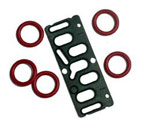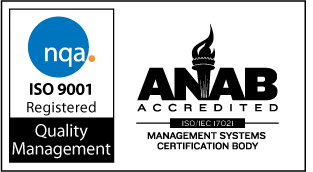
|
7108
S. Alton Way, Unit I |
(303) 758-2728
Home > Problems Solved > Urethane O-ring Drive Belt
The Case of the Dying Drive Belts
Solved with a Urethane O-ring Belt
 Like
everyone, we get requests for quotes over the internet. It's not what
we do as a general rule. We are more interesting in solving sealing problems
than offering the lowest price, but we will quote if it appears that the
customer needs more than just a price. A few years ago a company asked
us to quote on four sizes of FKM fluorocarbon o-rings and mentioned in the inquiry
that they were using a nitrile o-ring as a drive belt and it was failing
on a weekly basis. Someone had recommended FKM as a possible solution
to the o-ring belt problem.
Like
everyone, we get requests for quotes over the internet. It's not what
we do as a general rule. We are more interesting in solving sealing problems
than offering the lowest price, but we will quote if it appears that the
customer needs more than just a price. A few years ago a company asked
us to quote on four sizes of FKM fluorocarbon o-rings and mentioned in the inquiry
that they were using a nitrile o-ring as a drive belt and it was failing
on a weekly basis. Someone had recommended FKM as a possible solution
to the o-ring belt problem.
We sent the quote but also mentioned that we didn't really think FKM was the best approach. FKM's claim to fame is excellent temperature and fluid resistance and that probably was not what was causing the o-ring belt failure. When many synthetic rubbers stretch they age and crack much more rapidly. We knew that another o-ring, such as a urethane o-ring, had properties that might solve the problem.
The company responded that our price was not the lowest, but that we were the only company which had questioned using FKM. They wanted to talk further. So we asked about the application.
They made a small office type machine which they leased out. The lease on the machine included maintenance. There were hundred of machines in operation throughout their country. The cost of the o-ring belt, no matter what material, was a small fraction of what the failures were costing them. Once we had determined that there was no actual temperature problem involved, we recommended a urethane o-ring. Urethane is a plastic, not an elastomer, and doesn't have the same stretch/aging problem. We expected the urethane to last much longer under the conditions the o-ring belt was subjected to.
Our progress in getting the urethane o-ring belt to work was not smooth. Initially we sent them an urethane o-ring that was the same size as the nitrile o-ring they were using. We forgot that nitrile has a lot more stretch than urethane and so they were using a smaller diameter o-ring to compensate. Sorry about that. The company then shipped us a machine so we could figure out the right size. It took some trial and error, but we did.
An urethane o-ring has a service life in excess of one year, but the company replaces them annually just to be safe. This means that they now use one urethane o-ring where they used to use fifty-two. And oddly enough that is the smallest part of the savings. They still send maintenance people out but at much longer intervals so labor costs have dropped a lot. For what it's worth, a urethane o-ring (metric cross section and non-standard ID) costs more than the FKM fluorocarbon o-ring we quoted but the price of the o-ring is no longer an important consideration.
Conclusion: The cost to use a product is often much more than the cost to buy it.
Note: [Some characteristics of an urethane o-ring: The temperature range of an urethane o-ring is -40 C to +105 C. Urethane is an excellent elastomer with high abrasion resistance characteristics and high tensile strength. Urethane o-rings are often used in high pressure hydraulic systems where highly stressed parts are subject to wear.]
Next Topic: The Case of the Mixed Up Millimeters
We are located in the Denver Technological
Center in a suburb of Denver, Colorado
©1997-2017, Problem Solving Products, Inc.
Website Map | Privacy Statement
| Terms of Use

